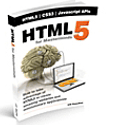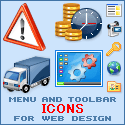Free Source Code and ArticlesSubmitted by:jagan nath
8/19/2023 12:00:00 AM
Language: obs
jab tak hai jaan, jane jaah mein nachugi&nb Submitted by:sushant Gawas
11/24/2014 12:00:00 AM
Language: Programming
Clickjacking, also known as a "UI redress attack", is when an attacker uses multiple transparent or opaque layers to trick a user into clicking on a button or link on another page when they were intending to click on the the top level page. Thus, the attacker is "hijacking" clicks meant for their page and routing them to another page, most likely owned by another application, domain, or both. Using a similar technique, keystrokes can also be hijacked. With a carefully crafted combination of stylesheets, iframes, and text boxes, a Submitted by:P.K
1/5/2014 12:00:00 AM
Language: Asp.net MVC
Submitted by:P.K.S
8/17/2013 12:00:00 AM
Language: Asp.net MVC
1. Can you describe ASP.NET MVC Request Life Cycle? Ans. There are two answers for the question. Short Answer: Following are the steps that are executed in ASP.NET MVC Request Life Cycle. I. Receive request, look up Route object in RouteTable collection and create RouteData object. II. Create RequestContext instance. III. Create MvcHandler and pass RequestContext to handler. IV. Identify IControllerFactory from RequestContext. V. Create instance of class that implements ControllerBase. VI. Call MyController.Execute method. VII. The ControllerActionInvoker determines which action to invoke on the controller and executes the action on the controller, which results in calling the model and returning a view. Detailed Answer: There are five main steps occurs in ASP.NET Request Life Cycle. I. Initialize Application (Route table is created) Desc. When we request a page from a normal ASP.NET application, there is a physical copy of page on the disk that is corresponds to each page request. In ASP.NET MVC, there is no page on the disk that corresponds to the request. Request is routed to the controller. The controller is responsible for generating page that is sent back to the browser. ASP.NET MVC has Route Table which stores mapping entries of particular URLs to action methods of contoller. i.e. URL “http://jinaldesai.net/Articles/CSharp” maps to the “CSharp” method of “Articles” controller. In ASP.NET MVC application like normal ASP.NET application when application starts first time, it calls Application_Start() application event from Global.asax. Route table is registered(created) from Appication_Start() event. II. Routing Mechanism (UrlRoutingModule intercepts the request) When a request is coming to ASP.NET MVC application, the request is intercepted by UrlRoutingModule HTTP Module. The first thing the module does is to wrap up the current HttpContext in an HttpContextWrapper2 object. Next, the module passes the wrapped HttpContext to the RouteTable that was setup in the previous step, which includes includes the URL, form parameters, query string parameters, and cookies associated with the current request. Next, the module creates a RouteContext object that represents the current HttpContext and RouteData. The module then instantiates a new HttpHandler based on the RouteTable and passes the RouteContext to the new handler’s constructor(In ASP.NET MVC case it is MvcHandler). Last step taken by module is setting MvcHandler as the current HTTP Handler. III. MvcHandler Executes (Instantiate and execute controller) In normal ASP.NET application after second step, it fires set of events including Start, BeginRequest, PostReso Submitted by:Archana
8/17/2013 12:00:00 AM
Language: Asp.net MVC
What is difference between jQuery's ready and holdReady?
.What is the use of noConflict() method in Jquery? |
Share Your Source Code or Article
Do you have source code, articles, tutorials, web links, and books
to share? You can write your own content here. You can even have your
own blog.
Submit now... SponsorPopular Source Code (Today)Random Source Code |
| |
Professionallearn.com |
[ Log On ] |





